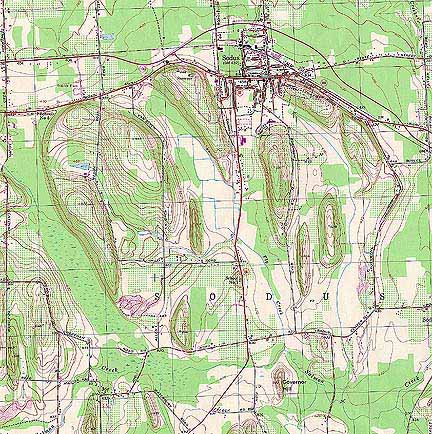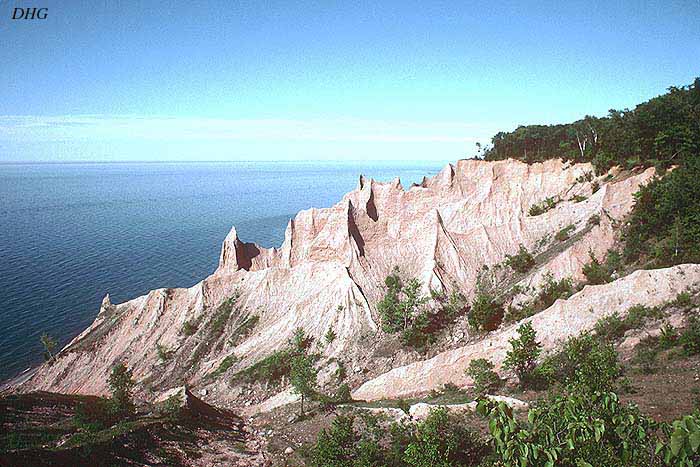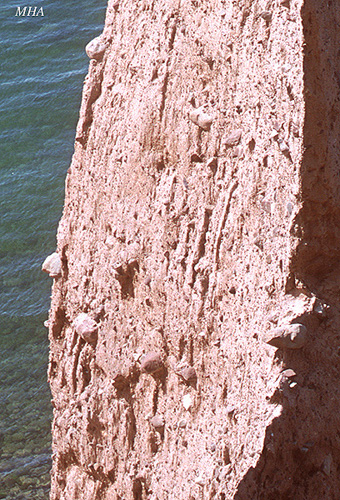
Along the shore of Lake Ontario just east of Sodus Bay is a large drumlin eroding into the lake. This "badlands" area of bluffs and pinnacles, consisting of curiously pinkish glacial till, is the inside of a drumlin that once extended much further north, but has since been dissolved by wave action from Lake Ontario plus the weather. Covered by a primarily beech-sugar maple forest, this woodland is slowly falling away into the lake. This area is now Chimney Bluffs State Park.
Such drumlin bluff areas occasionally occur along the southern portion of Lake Ontario, but are most common from the northeastern corner of Sodus bay westward into Oswego county.

The islands in Sodus Bay, drumlins themselves, represent the northern limit of the drumlin field, which runs offshore into the lake to the northeast. Chimney Bluffs is indicated by the red arrow.

During the final ice retreat, a lake extending several miles further south than Lake Ontario, glacial Lake Iroquois, apparently created Chimney Bluffs-like effects on other drumlins. A complex of drumlins just south of the town of Sodus were truncated at their northern ends by wave action from this ancient lake. This area, however, has long since lost the Chimney bluffs appearance.

Cross-section of the Chimney bluffs area. Note the dramatically eroded terrain, with Lake Ontario to the north and the forested drumlin top to the south.

Images from the trip:
To see the slide show:
1. Select the album.
2. Press the "play" button at the bottom of the page.
3. If you want to go back to a certain slide, press the "stop" button, then select the slide you wish to go to.
Photo credits: AW= Alan Witztum, DHG= Doug Goldman, JTR= Jason Rauscher, MHA= Mac Alford, RED= Robert Dirig, SVH= Scott Heald